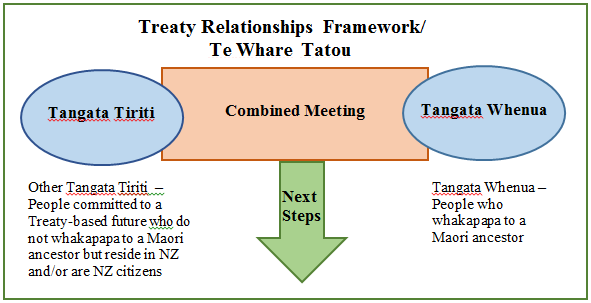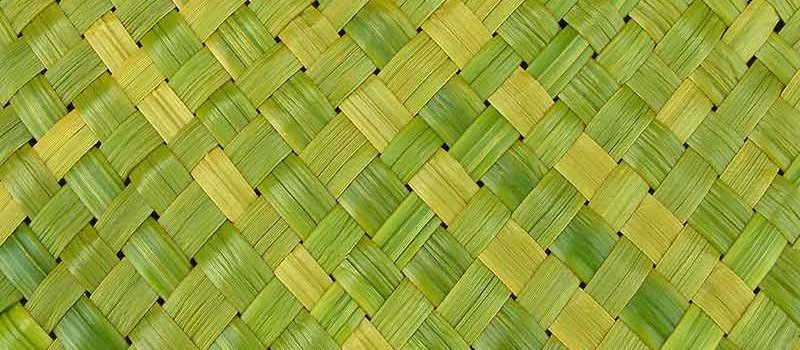The affirmation in 2010 by the New Zealand Government of the United Nations Declaration on the Rights of Indigenous Peoples formally recognized the indigenous status of tangata whenua. This recognition raises the question of the status of those of us who do not have a Maori ancestor. In 1989 Judge Eddie Durie described the status of all non-Maori citizens as tangata Tiriti, as belonging to the county by right of Te Tiriti. Some tangata Whenua regard themselves as also tangata Tiriti, but for the purposes of this paper we have named those of us who do not have a Maori ancestor as ‘tangata Tiriti’.
Particular recognition of mana whenua is vital, as the signing of Te Tiriti o Waitangi by the Crown committed it to upholding te tino rangatiratanga (the paramount authority) of hapu and of confederations of hapu including te Wakaminenga o Nga Hapu o Nu Tireni (the Confederation of the Tribal Nations of New Zealand). Britain had officially recognised the Declaration of Independence/He Wakaputanga o te Rangatiratanga o Nu Tireni which was declared by te Wakaminenga in 1835, and joined by other hapu later. This recognition of mana whenua places emphasis on working in a place-based and values-based way when thinking through the rights and responsibilities of tangata Tiriti. Central to this work is careful attention to holding on to what really matters.
Te Tiriti /Treaty Relationships Framework:
This framework, diagrammed below, encourages all peoples to work together towards the best world we can imagine, building on the networks of cross-cultural relationships already developing – relationships that are developing an intercultural understanding of how we can work together. Understanding these relationships highlights much that is regarded as the common good and it urgently needs to be developed along the lines of the scenario described in the Strong Sustainability for NZ report.
There have been some small but encouraging signs of movement by recent Governments. The Whanganui River and Tuhoe Treaty Settlements have each led to significant new legislation. Such developments may allow a new way of working to open up, as well as an exploration of the meaning of the Commons in this country.
The Crown’s role as agreed to in the Treaty needs to be spelt out and advocated for by those of us who understand the role of tangata Tiriti. Organising by tangata Tiriti has become pivotal. The Third Sector, aka the Not-for-Profit /NGO/ etc Sector, which stands alongside the Government (central, regional and local) and Commercial Sectors, has proved the vital early site for such organising, – but all three Sectors must and will be drawn in as understanding develops.
The basis of Te Tiriti Treaty Relationships Framework is the Whare Tatou with its two caucuses of Tangata Whenua and Tangata Tiriti. The Whare Tatou calls the people together to hui in accordance with the tikanga and kawa of mana whenua. Two caucuses may then form and work separately, sometimes caucusing within themselves, e.g. for cultural or issues group(s). After the caucusing everyone comes together in the Whare Tatou to report as they wish and the next steps are identified. The Whare Tatou is for the sharing of common concerns and aspirations as well as of diversity and differences – talking through them, not working in isolation.

Some Third Sector groups have already begun to work within this Tiriti Relationships Framework and are developing their understanding of what a Tiriti-based future might be like. Understanding the Treaty in this way opens up opportunities for all who live in this country to examine our rights and responsibilities. By building values-based and place-based lasting relationships in this way we can develop a diverse, cohesive Tiriti-based, sustainable, multicultural future which respects the mana of tangata whenua.

